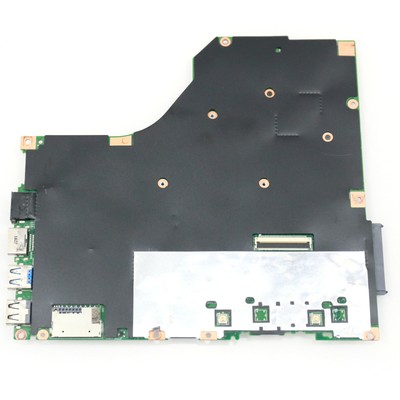

- #Tricaster 40 motherboard 720p#
- #Tricaster 40 motherboard portable#
- #Tricaster 40 motherboard software#
- #Tricaster 40 motherboard plus#
We did this for testing purposes and found that, while it might require a younger set of eyes than ours, we were familiar enough with the layout to do basic productions ( Figure 8, below).įigure 8. Once an external computer is plugged in, you can run the entire TriCaster interface on the very small integrated screen. Sans second screen, the HD4 defaulted to a NewTek logo animation. When we tried booting our TriCaster Mini without a second screen attached, the unit just paused at a pleasant but repetitive NewTek logo animation ( Figure 7, below). Screen size aside, though, one thing you will need to do to get started is plug in an external screen. We hope NewTek will come up with as elegant an integrated monitor concept-or a clever ultraportable external monitor option-by the time the next TriCaster Mini model rolls out.
#Tricaster 40 motherboard software#
Granted, these other devices didn’t have quite the software and user-interface functionality behind them, but the fact that one shouldn’t have to choose between bring the integrated monitor to eye-level or suffer from leaning over to peer into the small monitor if the TriCaster Mini is positioned closer to one of the HMDI-based cameras. We’ve seen other integrated streaming devices that have a smaller form factor but a wider, brighter, tiltable touch screen. Integrated Screen and On-screen UseĪs mentioned above, we like the idea of the integrated screen, but it’s really too small for practical use. We didn’t test this option, though, because we were focused on very small form factor workflows, and an external drive can add both external power requirements and bulk to a setup. It’s possible, however, to attach an external USB 3.0 drive, using one of the four USB 3.0 / SuperSpeed connectors on the HD-4, yielding up to four channels of recording, two on the internal drive and two on the external drive. While the HD-4i has dual 750GB internal drives, and supports standalone recording of up to 4 IsoCorder channels simultaneously, the TriCaster Mini HD-4 has a single 750GB internal drive. The HD-4 unit that we tested is actually the lower-end HDMI-equipped version, and one area that it lags behind the more robust HD-4i version is the in the area of recording.
#Tricaster 40 motherboard plus#
In addition, the TriCaster Mini offers Lifestream and Ustream integrated support, plus the ability to access a profile manager via an integrated web browser. RTMP is still widely used for streaming, even when it comes to pushing the content directly to an in-house or hosted media server solution. Like most TriCasters, the TriCaster Mini supports streaming formats, including RTMP streaming and older Microsoft Media profiles.
#Tricaster 40 motherboard 720p#
Speaking of streaming, the TriCaster Mini holds its own against more expensive TriCasters, offering a variety of pre-set 720p output formats via the single Gigabit Ethernet port. This would include streaming workflows, as a number of our use cases for the TriCaster Mini wouldn’t make use of the HDMI video outputs.
#Tricaster 40 motherboard portable#
Nelson said it was not, but I think NewTek should consider selling a bundle with this bus-powered external monitor for those who use the device primarily for very portable workflows. After the demonstration Philip Nelson provided, I asked whether the external USB-based monitor he was using was sold as an optional accessory. The second quibble-and this will vary based on your workflow-is the lack of an available bundled solution for a portable external monitor. There are even a few audio input ports covered up on the TriCaster Mini’s motherboard, and logic boards in the mini ITX form factor used by the TriCaster Mini are readily available with dual Ethernet ports. While the form factor is small, there’s plenty of space for a second Ethernet connector, which would provide two primary features: redundancy in case of failure of one Ethernet port as well as the ability to segment off streaming outputs from IP video cameras and NewTek’s own network video feeds. And the TriCaster Mini is no exception.Įthernet on the TriCaster Mini presents one of two primary workflow shortcomings in our assessment. NewTek outputs MPEG-2 Transport Streams (M2TS) at a rather high bitrate from 3Play and TriCaster systems alike, as a way to allow the output from these to be integrated into any device or player capable of receiving the transport stream. These could be IP cameras, in which case the TriCaster Mini’s integrated pan-tilt-zoom (PTZ) control comes into play, or it could be from another NewTek device, such as a 3Play instant replay system or another TriCaster.

That’s mostly true, but we need to mention the Ethernet connector, which doubles as both the network connection-for streaming, pulling down updates, and so on-as well as the input for up to two IP-based network video devices. I mentioned earlier that we were only going to focus on inputs and outputs, avoiding the connectors on the opposite side of the TriCaster Mini.


 0 kommentar(er)
0 kommentar(er)
